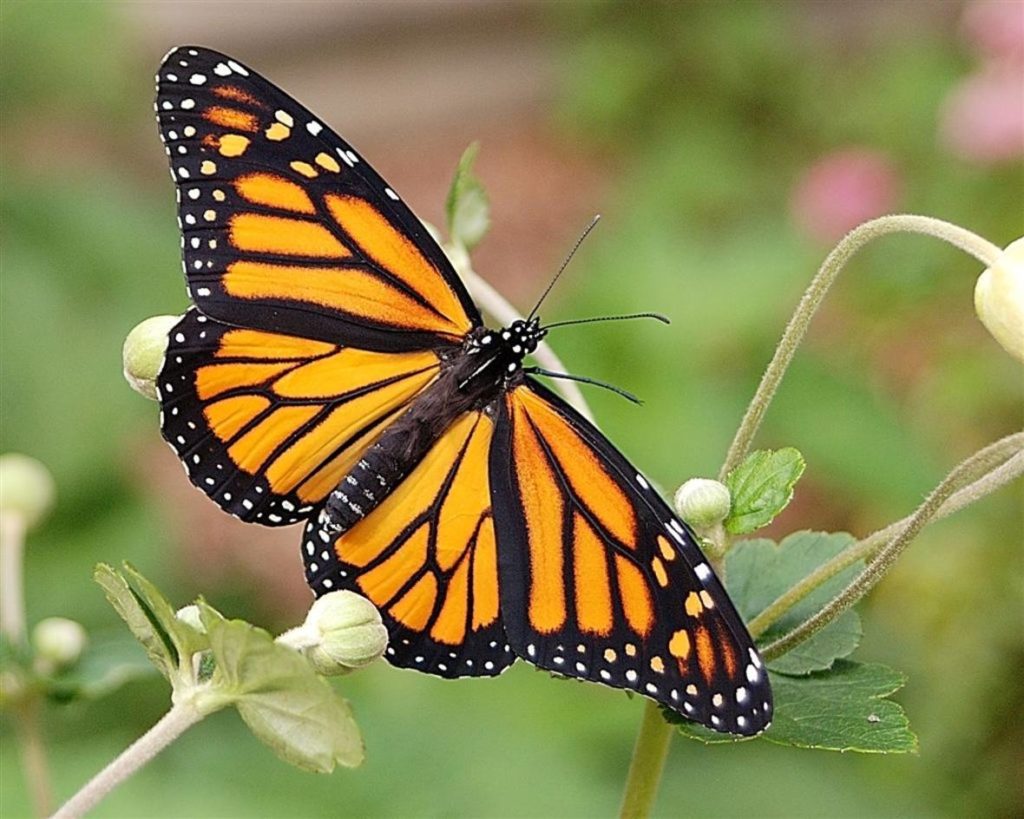Spotted lanternflies weren’t the only insects on county residents’ minds this summer.
Some Lebanon Valley gardeners and nature lovers have reported that area butterfly populations appear to be down this year compared to last year, with the stately orange-and-black monarch a specific focus for some.
LebTown spoke to Lebanon County Master Gardener Joan Weaver via phone about this apparent decrease. As a Master Gardener, Weaver is part of the Penn State Extension program that participates in volunteer work, article writing, and public programs every year. “The purpose of Master Gardeners is that we are supposed to provide education to the public about gardening and anything related to it,” said Weaver.
“My particular interest has been native plants and how they fit into the environment,” Weaver said, adding that insects naturally play a large role in that.
Weaver noted that there are some possible explanations for the decrease. “There was some pretty crummy weather in the spring this year,” she said. “Butterflies are cold-blooded and dependent on the atmosphere for their body temperature. A late freeze can kill a whole bunch of them.”
Weaver, who lives in the northern side of the county, added that some areas might have been subject to different weather at different times, and that cool temperatures may delay butterfly appearances. Sustained spring and summer warmth can be a benefit to butterflies, but the problem of temperature goes both ways. Eggs may not hatch and adults may be unable to mate in extreme heat.
Ultimately, though, anecdotal information about butterflies from within a current season is difficult to judge, and there are also plenty who haven’t noticed anything amiss. “It’s hard to tell from year to year until along about January in 2021,” Weaver explained, in reference to monarch butterflies in particular.

Monarchs in North America are noted for their impressive migratory patterns, which involve several generations hatching, flying, and laying eggs en route to a small mountain area in Mexico over the winter months. This is where and when the population number is estimated, with the lowest count reported in 2013-14 with about 14 million monarchs (in the past, the number has been in the hundreds of millions).
Earlier this year, scientists reported a 53% decrease from the previous year, and while monarchs are not classified as an endangered species, the drop has alarmed some. Monarchs have been on the decline for several decades, according to Weaver, and when they return to the northeastern US and Canada, this decline can be apparent.

Though not all butterflies migrate as the monarchs do, they can be affected by the same weather and temperature patterns of the Lebanon Valley. Other easy-to-spot species in the area include the eastern tiger swallowtail, the spicebush swallowtail, and the black swallowtail. A few of the smaller species that call Lebanon home are the silver-spotted skipper, the cabbage white, and the pearl crescentspot, among many others.
Another possible factor in the perceived decline may be simply that 2019 was a good year for butterflies, as reported around this time last year by Penn Live — though that perception too may have been simply word-of-mouth.
“We who like butterflies are on social media and posting pictures of the latest butterfly that landed in our flowerbed,” Weaver said. “It’s very anecdotal.”
Aiding next year’s butterflies
Although 2020 may or may not prove to be a bum year for butterflies, many species’ numbers rise and fall cyclically and there are some things that can be done to aid next year’s populations.
Weaver recommended the site Monarch Watch for keeping tabs on monarchs. The site provides information on the butterflies and the creation of “monarch waystations,” specially managed gardens with milkweed species.
For the monarch, milkweed is essential for the laying of eggs and the feeding of larvae. “It used to be that you could drive through the country and see milkweed in all kinds of places: vacant lots, uncultivated fields, the edges of roads,” Weaver said. But due to strict landscaping, pesticides, and more, “the monarch’s host plant just isn’t there anymore.”
More generally, butterflies and other pollinators are attracted to a diversity of flowering plants. Water and shelter are also a good idea, and keeping a yard or lawn a bit scruffy may help as well.
“You don’t want to cut everything down to the ground and destroy it,” advised Weaver. “It may not sound like what you’d expect Master Gardeners to say, but if people can keep themselves from mowing and clipping everything, that can make a yard inviting.”
Questions about this story? Suggestions for a future LebTown article? Reach our newsroom using the contact form below and we’ll do our best to get back to you.
We’re here to help make Lebanon County a better place.
LebTown is an independent media organization that provides timely, accurate, and comprehensive journalism intended to help people navigate their daily lives and promote the general well-being of Lebanon County.
Journalists are today a diminishing presence at the local level across the country, and the single most important metric for LebTown long-term will be the number of journalists we employ to cover Lebanon County.
You’re already supporting LebTown as a member. If you’re able, please consider making an extra one-time contribution this year.
Questions about this story? Suggestions for a future LebTown article? Reach our newsroom using the contact form below and we’ll do our best to get back to you.


































